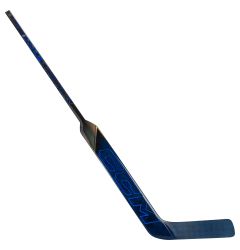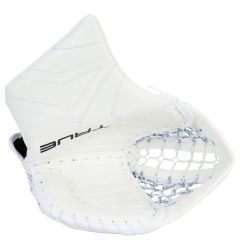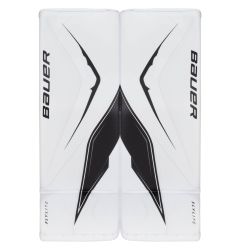Hockey Trapezoid Explained: A Comprehensive Guide for Players
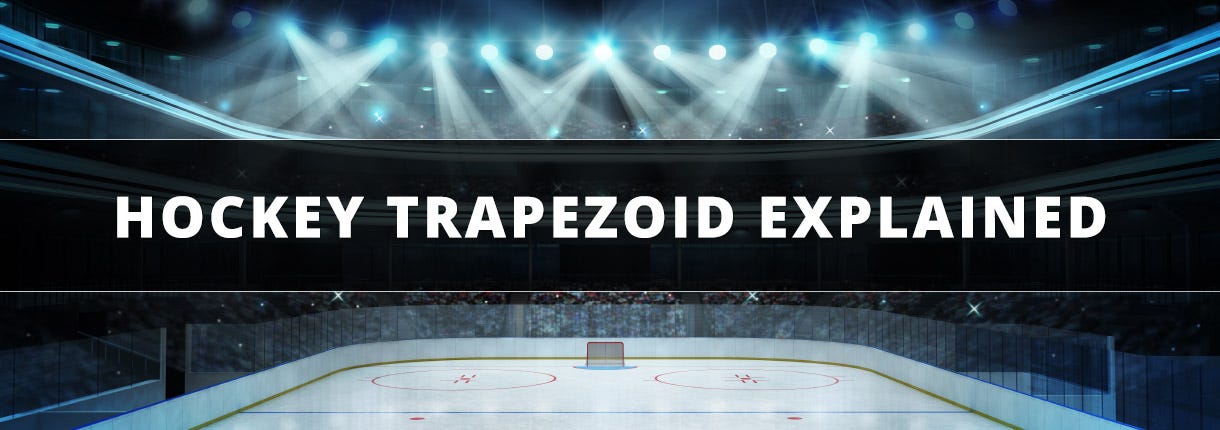
The hockey trapezoid might not be the most famous feature of an ice hockey rink, but it holds significant strategic importance in the game. Its function and governing rules shape how goaltenders participate in the play. Understanding its purpose and rules is crucial for players and fans alike. This guide aims to unravel the intricacies of the hockey trapezoid, offering insights into its role and regulation.
In this article, we’ll cover:
- What is the Trapezoid in Hockey?
- History of the Hockey Trapezoid
- Hockey Trapezoid Rules and Regulations
- The Importance of the Hockey Trapezoid
- Penalties and Consequences
- Trapezoid Awareness for Players
- Hockey Trapezoid FAQs
For an extensive selection of top-quality hockey gear to enhance your game and ensure you’re well-protected in the crease, check out GoalieMonkey’s equipment offerings.
What is the Trapezoid in Hockey?
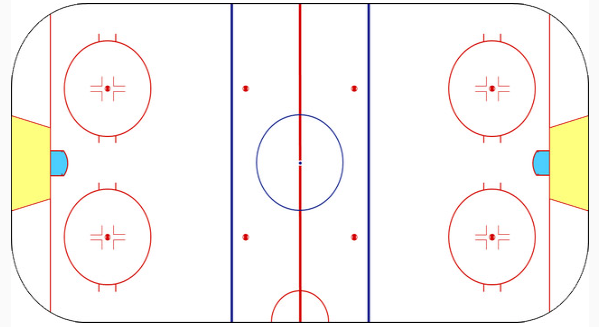

The trapezoid in hockey, often referred to simply as “the trapezoid,” is a designated area behind the goal lines and net. Its presence on the rink is not merely for show; it defines the space where goaltenders can handle the puck. Bounded by two diagonal lines that start six feet from the goalposts and extend diagonally to points 28 feet apart at the end boards, this area is the goalie’s domain for puck interaction. Outside of it, they must not play the puck, under penalty of ceding a power play to the opposition.
History of the Hockey Trapezoid
Introduced after the 2004-2005 NHL lockout, the trapezoid rule came into effect in the 2005-2006 season. The introduction of the trapezoid aimed to balance the game by limiting the goaltender’s role in puck distribution. This rule change was intended to curb their ability to play the puck behind the net, which was impeding offensive zone entries by the opposition, especially during dump-and-chase tactics.
Hockey Trapezoid Rules and Regulations
The rules pertaining to the trapezoid are specific and enforceable, with the area serving as a pivotal point for goaltenders’ interaction with the puck. Violations of these rules can result in penalties that shift the game’s momentum. Goalies can handle the puck within the trapezoid area without penalty and may also play the puck in front of the goal line.
1. The Goalie’s Role in the Trapezoid

A goaltender’s mobility and puck-handling within the trapezoid is unrestricted, but stepping beyond these bounds with the intention to play the puck is forbidden. Mastery of this space is a tactical asset, as it allows goaltenders to contribute to their team’s puck-clearing and defensive efforts.
2. Exceptions and Special Situations

While the trapezoid rule is rigid, goalies have some leeway under two specific conditions. First, a penalty is not imposed if the goalie plays the puck outside the trapezoid while maintaining skate contact with their goal crease. Second, if another player is within the trapezoid at the time the goalie is playing and controlling the puck, the goalie may handle the puck outside the trapezoid without a penalty being called.
The Importance of the Hockey Trapezoid
The trapezoid significantly influences gameplay, dictating the tempo and shaping offensive strategies. Teams often devise play patterns that account for the goaltender’s restricted puck-play area, exploiting these limits for tactical advantages.
Puck Retrieval and Defensive Strategies
Defensive strategies evolve with the trapezoid in mind, as teams work to retrieve pucks in ways that circumvent the goaltender’s restricted play zone. This often involves precise positioning and anticipatory moves to manage the puck effectively.
Penalties and Consequences for Violating the Trapezoid Rule
Goaltenders who handle the puck outside the trapezoid incur a two-minute minor penalty for delaying the game. This transgression can tilt the ice, as penalties can lead to power-play opportunities and potentially change the course of the game.
Hockey Trapezoid FAQs
Why can’t goalies play the puck outside the trapezoid?
Goalies are restricted from playing the puck outside the trapezoid to encourage more active play and scoring opportunities by limiting their ability to disrupt opposition attacks.
Can a goalie cover the puck in the trapezoid?
Yes, within the trapezoid, a goalie may cover the puck to stop play, adhering to the standard rules of the game to avoid penalties.
How far out can a goalie go in hockey?
Goalies are free to move anywhere on the ice, but are restricted to playing the puck within the trapezoid area behind their own goal line.
Why can’t you touch the goalie in hockey?
Goalies are protected from interference to ensure their safety, given their vulnerable position when focused on making saves.




